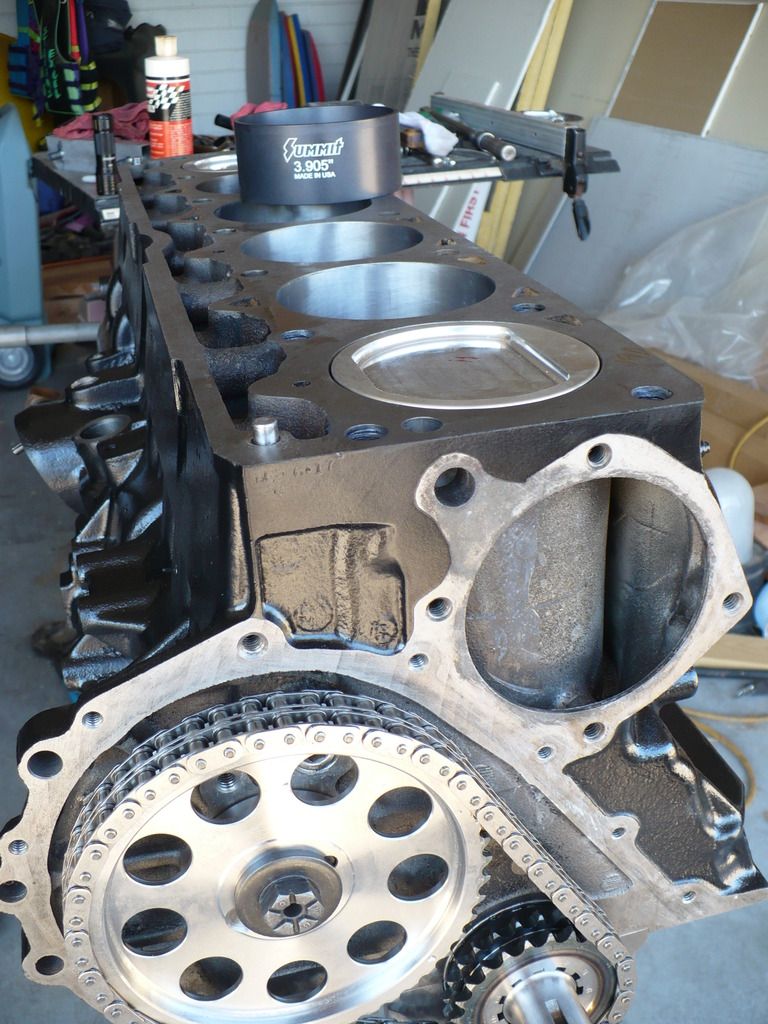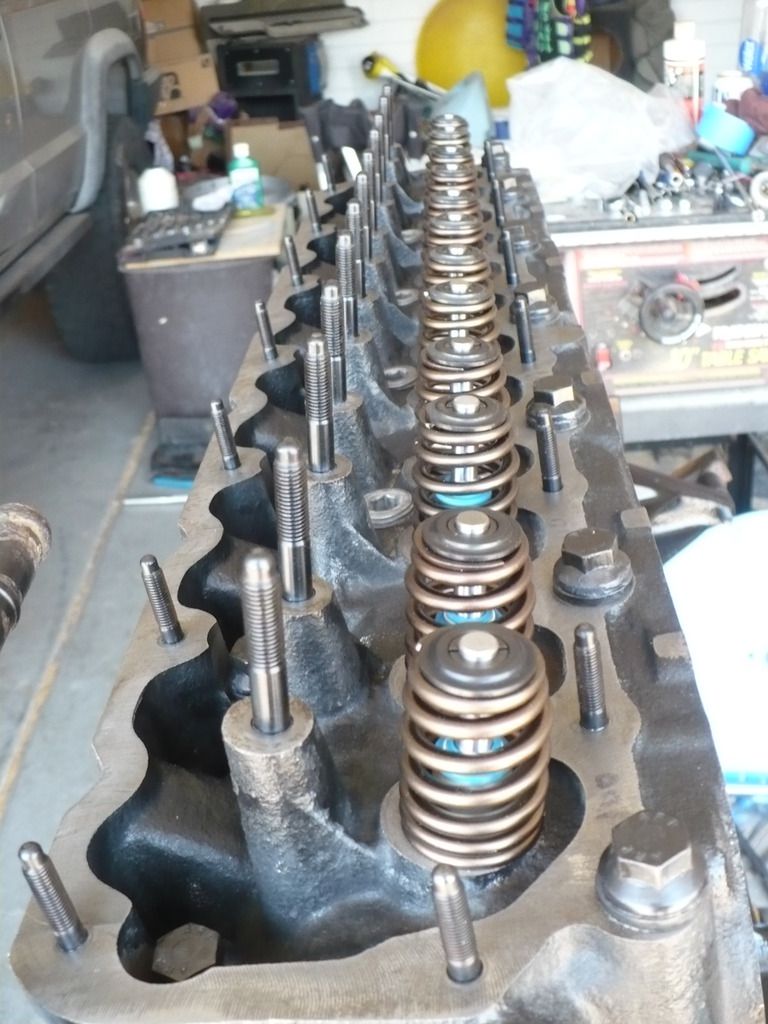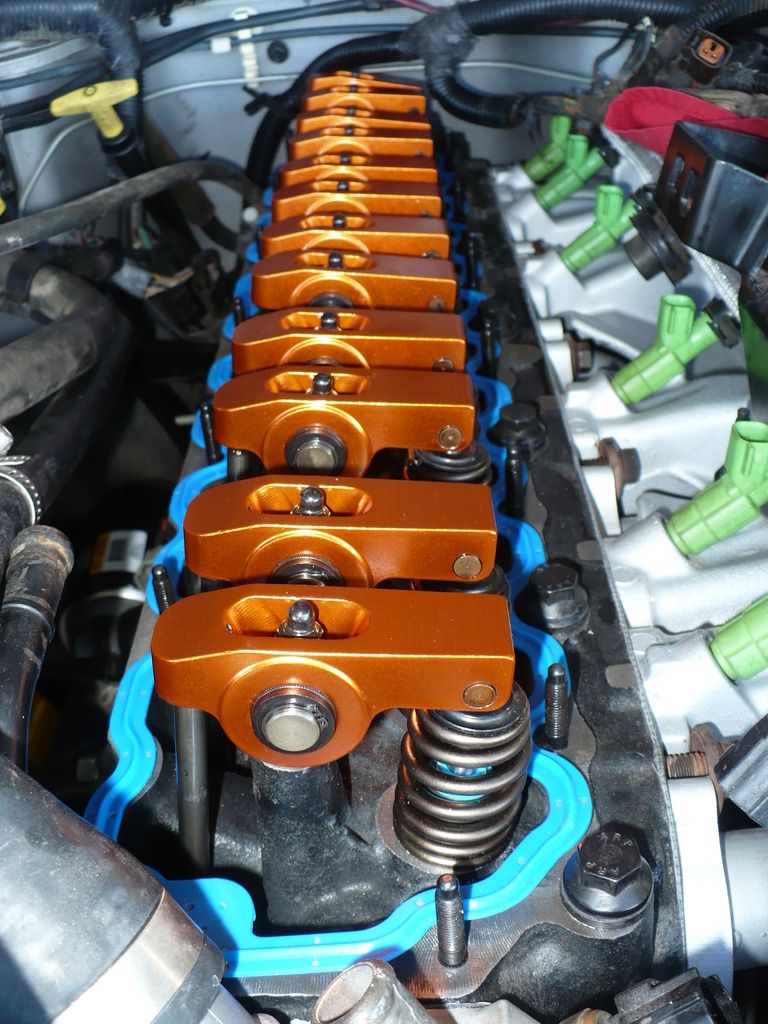HttpWayne
NAXJA Forum User
- Location
- Auburndale, FL
2000 Automatic, 4.6 Stroker with Sprintex Supercharger (has sat out back for over a year, FYI)
I have just rebuilt and engine and I am currently having a loss of power. It sounded okay when it first started up, but the longer it's been on the more it seems to be degrading. When I accelerate it's very laggy and doesn't have much power, but it does eventually rev up to around 5K.
I am also having some intermittent backfires that keep increasing the longer the vehicle is on and it's getting harder to start. I am re-using a (well inspected and perfectly okay) MOPAR camshaft with the same EngineTech lifters it used previously. It overheated and had a bent push rod because of a stuck valve last year. I inspected the lifters and watched many videos on the process and sent the pictures to the machinist. He didn't see anything wrong with them and I couldn't find anything.
The machinist that worked on the head for me is very reputable and has been machining and building engines for about 40 years at his shop.
I did a compression test on all of the cylinders and got the following (cold engine, never started, oil was primed a few days before - but I had been trying to crank it many times so a little priming was done in the mean time):
C1 - 140
C2 - 135
C3- 150
C4 - 90
C5 - 120
C6 - 135
I went back a retested and C3 was down to 125 and C4 I tested more than the rest. It always stayed at 90.
I had all spark plugs removed from all cylinders with this test.
My thinking is that I am going to retest, but this time try a spark plug on either side of the testing cylinder, then both cylinders to make sure there isn't a leak there. I suspect a cylinder to cylinder leak which is why I want to do this. I also noted a little bit of tiny oily-esque bubbles in the water (my coolant system is filled with nothing but distilled water ATM). When the vehicle is running there are no bubbles coming through the radiator cap and I don't have any air that I can burp out of the system so it doesn't seem like there's a leak there. Some oil did get inside the water jackets while I was oiling up the cylinder portions before I put the head bolts in so I suspect that is what that is. The oil doesn't look milky either.
I used 2 Victor Reinz MLS headgaskets I wanted to cut costs and was willing to deal with taking the head off if it didn't work. I investigated and although everyone naysayed it I could only find two people that actually did it and they didn't have any problems with it. Both guys were running turbos on cast iron blocks, one of them using over 20PSI and he had used that setup successfully for the past 3 years.
I don't have the dowel pins to line up and keep the head gasket in place so I used a layer of copper coat to keep them stuck together and to the head while I assembled.
The reason I used two HG's is because I had this engine custom built with a lot of compression and forged pistons that used 29CC's of dish. After Dean finished working on the head he said it would have more compression because he made the seats sit like they were supposed to. Previously the seats were in varying heights from one cylinder to the next and he didn't approve.
I am thinking that if I pull the head I will certainly inspect the lifters and cam, but if they still look fine I'm going to leave them. It seems like when you buy parts made in the US they actually last and can take a licking.
I want to know if anyone has any other recommendations on things I may be overlooking.
In regards to the super charger I see the diaphragm closing so I know boost is taking place. I just need to pull the injector to make sure the Split Second unit is reading it and opening the injector. I checked the tune to make sure it was still there from when it last ran.
Also, the exhaust setup was removed and is currently wide open, I could see the fuel injectors running at 35% fuel trim so I disconnected them for the time being until I get to the exhaust shop to finish piping it up for me. I've ran without O2's before in the past and it just runs at 10 AFR without any issues, other than decreased MPG.
My to-do list:
1. Check Sprintex injector operation
2. Compression test with alternating spark plugs in neighbor cylinder (looking for increased pressure in tested cylinder)
3. After Test 2 if I don't see any differences I'm going to purchase a leakdown tester.
I have just rebuilt and engine and I am currently having a loss of power. It sounded okay when it first started up, but the longer it's been on the more it seems to be degrading. When I accelerate it's very laggy and doesn't have much power, but it does eventually rev up to around 5K.
I am also having some intermittent backfires that keep increasing the longer the vehicle is on and it's getting harder to start. I am re-using a (well inspected and perfectly okay) MOPAR camshaft with the same EngineTech lifters it used previously. It overheated and had a bent push rod because of a stuck valve last year. I inspected the lifters and watched many videos on the process and sent the pictures to the machinist. He didn't see anything wrong with them and I couldn't find anything.
The machinist that worked on the head for me is very reputable and has been machining and building engines for about 40 years at his shop.
I did a compression test on all of the cylinders and got the following (cold engine, never started, oil was primed a few days before - but I had been trying to crank it many times so a little priming was done in the mean time):
C1 - 140
C2 - 135
C3- 150
C4 - 90
C5 - 120
C6 - 135
I went back a retested and C3 was down to 125 and C4 I tested more than the rest. It always stayed at 90.
I had all spark plugs removed from all cylinders with this test.
My thinking is that I am going to retest, but this time try a spark plug on either side of the testing cylinder, then both cylinders to make sure there isn't a leak there. I suspect a cylinder to cylinder leak which is why I want to do this. I also noted a little bit of tiny oily-esque bubbles in the water (my coolant system is filled with nothing but distilled water ATM). When the vehicle is running there are no bubbles coming through the radiator cap and I don't have any air that I can burp out of the system so it doesn't seem like there's a leak there. Some oil did get inside the water jackets while I was oiling up the cylinder portions before I put the head bolts in so I suspect that is what that is. The oil doesn't look milky either.
I used 2 Victor Reinz MLS headgaskets I wanted to cut costs and was willing to deal with taking the head off if it didn't work. I investigated and although everyone naysayed it I could only find two people that actually did it and they didn't have any problems with it. Both guys were running turbos on cast iron blocks, one of them using over 20PSI and he had used that setup successfully for the past 3 years.
I don't have the dowel pins to line up and keep the head gasket in place so I used a layer of copper coat to keep them stuck together and to the head while I assembled.
The reason I used two HG's is because I had this engine custom built with a lot of compression and forged pistons that used 29CC's of dish. After Dean finished working on the head he said it would have more compression because he made the seats sit like they were supposed to. Previously the seats were in varying heights from one cylinder to the next and he didn't approve.
I am thinking that if I pull the head I will certainly inspect the lifters and cam, but if they still look fine I'm going to leave them. It seems like when you buy parts made in the US they actually last and can take a licking.
I want to know if anyone has any other recommendations on things I may be overlooking.
In regards to the super charger I see the diaphragm closing so I know boost is taking place. I just need to pull the injector to make sure the Split Second unit is reading it and opening the injector. I checked the tune to make sure it was still there from when it last ran.
Also, the exhaust setup was removed and is currently wide open, I could see the fuel injectors running at 35% fuel trim so I disconnected them for the time being until I get to the exhaust shop to finish piping it up for me. I've ran without O2's before in the past and it just runs at 10 AFR without any issues, other than decreased MPG.
My to-do list:
1. Check Sprintex injector operation
2. Compression test with alternating spark plugs in neighbor cylinder (looking for increased pressure in tested cylinder)
3. After Test 2 if I don't see any differences I'm going to purchase a leakdown tester.



